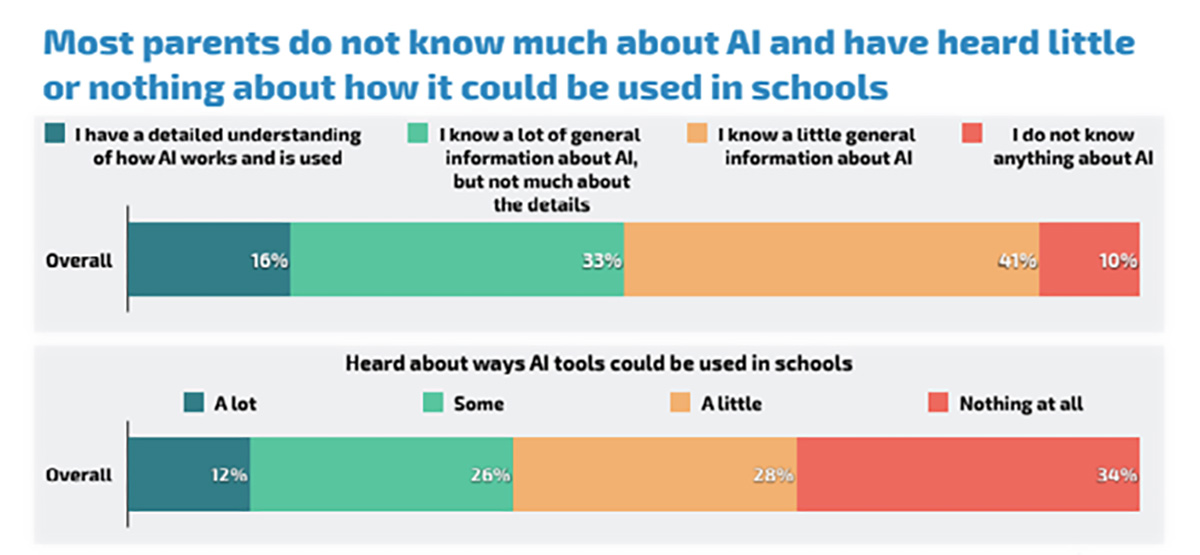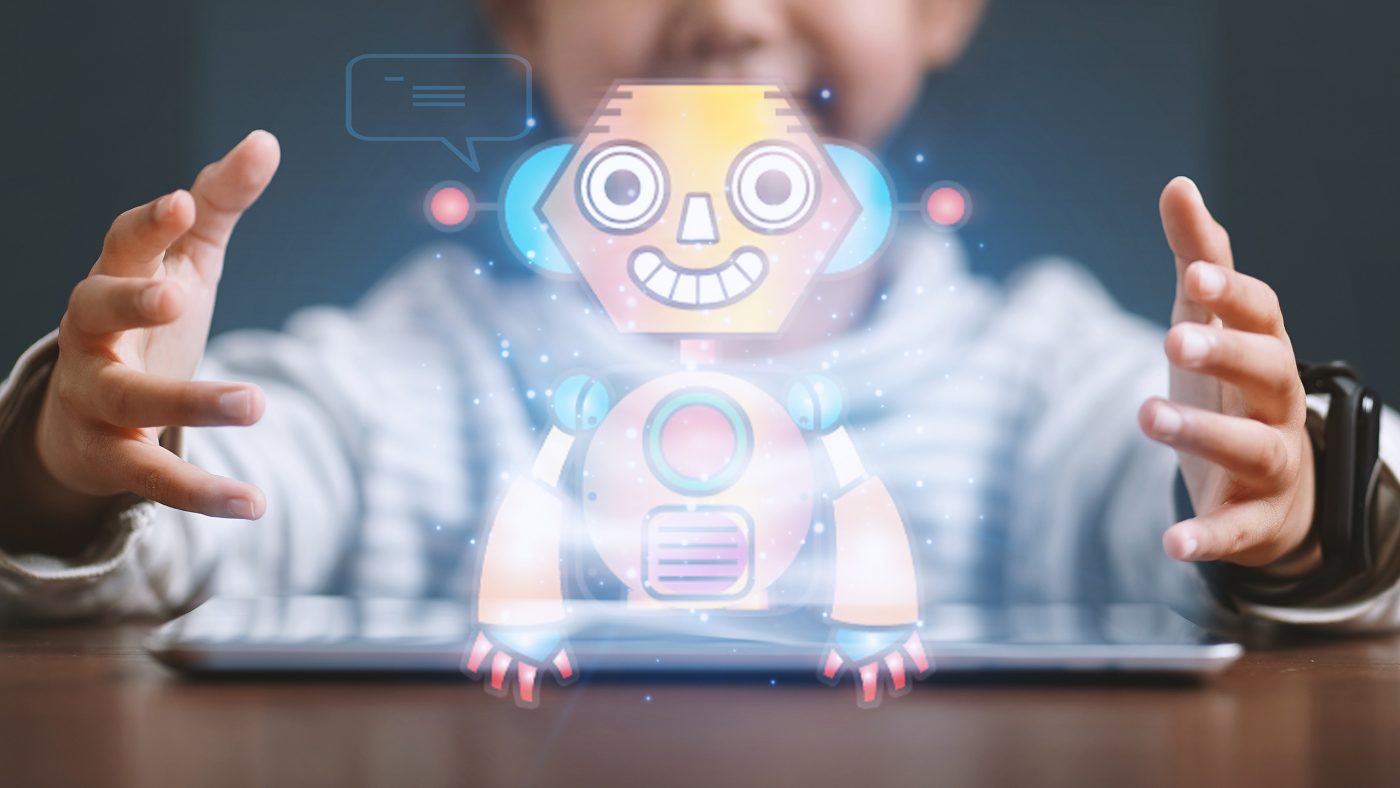On June 25, the Campaign for Grade-Level Reading held a webinar on the benefits and risks of bringing artificial intelligence (AI) into early education settings. Ariel Gilreath of The Hechinger Report moderated the conversation, which featured:
- Dana Clarkson, Design39Campus
- Isabelle Hau, Stanford Accelerator for Learning at Stanford University
- Michelle Kang, National Association for the Education of Young Children
- Jay Lee, an educator in Oakland, Cal.
- Keri Rodrigues, National Parents Union
- Celia Stokes, Teaching Strategies
“Why is AI different from past tech innovations?” asked Gilreath, prompting the panelists to reflect on ways that previous advances were initially regarded as threats, then accepted as inevitabilities.
Here are our takeaways from the illuminating conversation:
1. The time to confront risks is now. “It’s here,” said Dana Clarkson, “and it’s not going away.” Supporting this contention, Isabelle Hau cited a recent Walton Family Foundation survey finding that 46% of teachers, 51% of parents and 48% of K-12 students report using AI chatbots once a week or more. Adding, “There are a lot of risks here.”
Hau mentioned ethical concerns about how data is handled and the domination of the field by large for-profit companies motivated by profit rather than the education of children or well-being of families. Noting that structural biases exist in the language sets that AI draws upon, Michelle Kang said, “Source data has to be inclusive.”
Just because the AI genie is out of the bottle doesn’t mean that it’s too late for government (and educators and advocates) to hold companies to account and to remain vigilant about the hazards of untested technologies. Keri Rodrigues mentioned the EDSAFE AI Alliance as a leading convener.

👉 Is Early Childhood Education Ready for AI? (Hechinger Report)
2. Inclusion builds trust. “Move fast and break things” used to be a mantra in Silicon Valley, but nobody is that cavalier when it comes to shaping young minds. Celia Stokes argued that technology companies must earn the trust of teachers and families if they expect to play a part in the early educational ecosystem.
Clarkson, a self-described early adapter of AI, recommended including teachers and parents in conversations about when and how it’s used. She marveled at the ease with which Lit Lab generates stories when users choose characters and setting, and set the reading level.
👉 Five Examples of Thoughtful GenAI Applications in Early Childhood Education (Sonia Tiwari on LinkedIn)
3. Supporting the workforce is a top a priority. None of the panelists predicted that AI would replace educators, but what if it made the profession more appealing? “Less privileged kids need access to human teachers,” Hau reminded viewers, while Kang emphasized the central role of “strong relationships between and among educators, families and children.”
The greatest hope might lie in technology’s potential to relieve administrative burdens, making the job easier and more joyful. “AI can provide the sketch,” said Kang, “but it takes a human to provide the color.”
Jay Lee mentioned using AI to brainstorm curriculum ideas; in the chat I asked for an example, and he responded: “Prompting ChatGPT to share developmentally appropriate activities for my classroom based on that week’s theme. I can even ask ChatGPT to incorporate existing materials we have in our classroom, and can ask it to incorporate potential likes/dislikes/needs that I specifically know. The results can be hit or miss, but it is certainly fun to play with, and it’s a great partner for brainstorming.”
👉 The Impact of AI: The Benefits and Challenges That Lie Ahead for AI in Education (National Parents Union)
4. Children will determine how AI unfolds in their lives. With every new technological development, experts weigh in on how and when to bring it into children’s lives. Time and again, once young children get their hands on the device, they define the terms of use. Clarkson noted that while “It’s difficult for grownups to learn new things, kids are bringing these skills into our classrooms.” Rodrigues concurred: “Look in the backseat of every car in America. Look at the booths in the restaurants.”
👉 Discover Common Sense Media’s AI Initiative
5. Intention matters. Panelists cautioned educators not to blunder into AI without considering the consequences. “When used intentionally,” Kang said, “AI can be a valuable tool.”
Stokes envisions a time when AI can help individualize education and support assessment—by “whispering in the ear of teachers in the moment”—but stressed that it’s not a replacement for human judgment.
For Clarkson, maintaining the North Star of “building agency in our learners” can protect institutions and educators from getting carried away with AI’s dazzling capabilities. That is, we should make sure we’re using the technology, rather than the other way around.

Mark Swartz
Mark Swartz writes about efforts to improve early care and education as well as developments in the U.S. care economy. He lives in Maryland.



